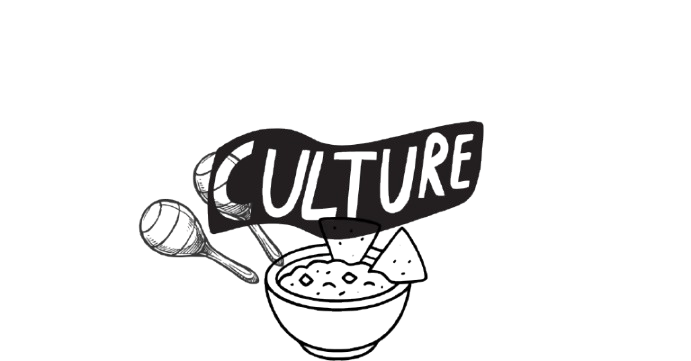The Universal Language: How Cooking and Travel Unlock the Heart of a Culture
You know, travel isn’t just about checking landmarks off a list. It’s really about a shift in how you see things. Sure, you take the photos of the famous buildings and monuments—everyone does. But the real history, the soul of a place? That comes through the simple, sensory act of eating and cooking. Food is like this unspoken dialect. It’s a delicious code that tells you everything about the land, the climate, and what people’s daily lives are like. Travelling with a curious palate is kinda like being an edible archaeologist. Every meal is a dig site, and every flavor is an artifact you get to uncover. It’s not just part of the journey; it’s the best gateway to actually getting a place.

Food as a Cultural Lens: Reading a Story on a Plate
Honestly, every dish tells a story if you know how to read it. The ingredients alone whisper secrets. Think about Mediterranean food—all that olive oil and sun-ripened tomato? That’s a landscape talking. Then you have those heavy, hearty stews from Eastern Europe, which basically scream about needing warmth and sustenance through a brutal winter. And the ways people preserve food—like Korean kimchi or Scandinavian gravlax—that’s pure human ingenuity right there, a testament to surviving seasons of scarcity.
The differences in philosophy are wild. Take Japanese washoku. It’s all about seasonal freshness and this minimalist, beautiful presentation. A single piece of sushi is a masterpiece. It reflects a whole culture that values harmony with nature. Now, flip that to a communal Moroccan tagine. It’s vibrant, slow-cooked, served from one big pot. That style of dining? It shouts about hospitality, community, and sharing. It’s not just about what you eat, but how it’s all done. That’s where you see the real values, just laid bare on the table.
The Hands-On Classroom: Cooking Classes Abroad
Eating out is great, but a cooking class? That’s a whole different level of immersion. It’s the difference between watching a ritual and actually being invited to join in. A really good class isn’t just about the recipe. You’re learning history and social rules without even realizing it. Like, rolling pasta by hand in some Tuscan farmhouse—you’re not just making lunch. You’re learning about nonna, regional quirks, and this brilliant Italian concept of cucina povera: making incredible food from humble stuff.
And folding Chinese dumplings in a Beijing hutong? That teaches you about family and celebration. The key, I’ve found, is to skip the big, touristy operations. Go for the small, local-led ones. The class taught by a village elder in her own kitchen is where the magic happens. That’s where you get the real stories, the little nuances. It turns a lesson into a genuine human connection.
The Beating Heart of Cuisine: Markets and Street Food
If you want to know what people actually eat, you gotta get out of the restaurant districts and into the markets. The market is the chaotic, wonderful, smelly heart of it all. You see the raw ingredients: the insane colors of spices in Istanbul’s Grand Bazaar, the glistening fish in Tokyo’s old market, the fruits in Mexico City you can’t even name. Just bargaining a bit, smelling the herbs, watching people shop—that’s culture right there.
And street food! That’s the people’s cuisine. It’s unpretentious, cheap, and honestly, where you often find the most culinary genius. A bowl of pho from a Hanoi stall is a perfect meal—savory, herby, nourishing. It shows you how people eat on the go, how they socialize. Are they standing up? Sharing? That tells you something. My best tip? Just follow the locals. If there’s a line of people waiting, that’s your spot. Guaranteed.
The Intimate Invitation: Family Recipes and Festive Stuff
The absolute best thing that can happen? Being invited for a home-cooked meal. Family recipes are like heirlooms. Helping a Berber family make tagine in the Atlas Mountains or assembling tamales in Oaxaca—you’re not just cooking. You’re touching history. You learn the unwritten rules: how things are served, the gestures, the stories told over the table.
This gets even more intense during festivals. The sweets for Diwali in India symbolize light winning over darkness. Oktoberfest in Germany is just a massive celebration of Bavarian identity. Even something totally bonkers like Spain’s La Tomatina, with its tomato fight, shows a culture’s sense of humor and community. Going to these things, you get it in your bones how food is woven into everything.
The Lasting Nourishment: Food as a Bridge
At the end of the day, engaging with food while traveling fills more than your stomach. It fills your head with understanding. You start to appreciate the work that goes into a dish. You get why flavors are paired—like lime cutting through a rich Thai curry. And the coolest part? Food is this universal language. A smile after a great bite, laughing when you mess up a recipe, just breaking bread… it bridges gaps when words can’t.
So the takeaways are pretty simple, I think. Be curious. Be a little brave. Taste everything, ask dumb questions, wander into that loud market. Say yes to the cooking class and the family meal. Let the flavors lead you. The best souvenirs aren’t things you pack. They’re the tastes and smells and stories you collect. It’s all right there on the plate.